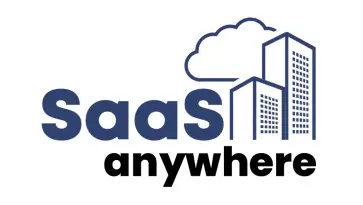
Michael Ross, October 20, 2025
Cognos has two main ways to present data to users, Reports and Dashboards. This document is intended to guide the direction of analytical Dashboards and Reports development in Cognos.
Explore Cognos Reporting
for Your Business Today!
Dashboarding
Description
The dashboarding component of Cognos is designed to present interactive visualizations to users to facilitate data exploration. An emphasis on exploration is achieved through dynamic filtering by clicking on data elements and by providing drill through capabilities to go from summary-level visuals down to the full level of details on other dashboard tabs or reports.
Note: Dashboard development cannot be transitioned to Reports. If the decision is made to abandon Dashboards and switch to Reports, the Reports would need to be created from scratch.
Use Cases
The use cases below are a sampling of situations where requirements would dictate that the use of a Dashboard would meet the needs of the end user:
- Desire for interactivity in terms of being able to click on a data element in one visual and have it natively re-render the other visuals with that filtered context
- Consumption in browser rather than via exports
- Data has been prepped at the database and semantic layer in a way that avoids the need to do multi-level aggregations of data within the Dashboard
- Visualizations are desired more than tables to convey the story of the data
Strengths and Weaknesses
| Strengths | Weaknesses |
| Easy for developers to drag and drop visualizations on the canvas and design a layout within the guidelines that Cognos enforces | Limited support for PDF export |
| Interactivity between visualizations available by default with dynamic filtering | Primary way to consume is via browser; PDF exports are rendered as Cognos sees fit and may not align with user expectations |
| Visually appealing aesthetics that are easy for users to understand | No native support for scheduling delivery of Dashboards |
| Support for AI Dashboard design through natural language prompting | Data elements that rely on multiple levels of aggregation through calculations may not allow for conditional formatting as desired |
| Continuing to receive feature upgrades with every new version of Cognos | Filters saved to a Dashboard apply to everyone that opens the dashboard (i.e. not dynamic to different people opening a dashboard) |
| Faster development time compared to developing a similar set of visualizations in a Report | Data security filters will be applied to Dashboards, but it may not be immediately apparent which filters are in place without making design choices that expose the impact of those filters |
Example: Let’s say you’re building a Dashboard to track camping gear sales. You might have a Product Category filter in the Dashboard that appears blank, but if a user only has access to tents, the data will be filtered to tents even though the filter appears empty. Clicking the dropdown for the filter would show “Tents” as the only available option. If a developer saved the Dashboard with a hardcoded Product Category filter of “Sleeping Bags,” that same user would see no results because their data security rules only allow them to view tents.
As you can see, it might not be optimal to use a Dashboard if the intent is to create a generic Dashboard used across many product categories or sales regions. It could be fine to use a Dashboard if the scope is narrowly defined.
Reporting
Description
Reports are the more mature way of developing and consuming data as they have been around since the advent of the platform. With near-limitless customization options, pixel-perfect reporting is possible with the Reporting interface in Cognos. Delivering highly formatted reports to users where and when they want them makes Reporting the ideal development path when fine-tuned formatting is required over interactivity. Interactivity can be added to reports to mimic the native functionality of Dashboards, but it would take additional development time to implement on a case-by-case basis.
Use Cases
The use cases below are a sampling of situations where requirements would dictate that the use of a Report would meet the needs of the end user:
- There is a requirement for the report to be exported and consumed outside of the Cognos platform. For example, email, PDF, or Excel.
- A static view of the data is all that is required (no interactivity needed)
- Need for highly formatted visuals with pixel perfect placement
- Data from source databases requires ample amount of manipulation in queries to get data into a format that meets reporting needs
Strengths and Weaknesses
| Strengths | Weaknesses |
| Pixel-perfect level of control over design of visuals | Interactivity between visualizations does not act in the same manner as the interactivity in Dashboards, but similar functionality could be developed manually |
| Consume reports in browser or via scheduled delivery to users via email in HTML, PDF, and Excel formats | Takes longer to perform similar development tasks compared to Dashboards (like adding a new prompt to a page) |
| Burst reporting sends customized reports to individual users based on their data access | Longer learning curve to mastering development techniques (nearly limitless customization options means there’s always something new to learn) |
| Report views offer the ability to create variations of a single source report, allowing for flexibility to investigate different portions of a data set while remaining sourced from a single controllable report | |
| CSS and JavaScript support allows for drastic changes to the look and feel of reports | |
| Conditional rendering of report output depending upon consumption method (HTML in browser, PDF and Excel exports) |
Conclusion
Cognos Dashboards and Reports each play a vital role in how users interact with data – one empowering quick, visual insights, and the other delivering detailed, governed analysis. Knowing when and how to use each helps ensure your analytics environment supports both agility and accuracy. The consultants here at PMsquare can help you define the right approach for your organization and guide your team in building effective, insight-driven solutions. If you’d like support optimizing your Cognos Dashboards or Reports, contact us today.
To stay ahead with the latest in Cognos, cloud, AI, and more, subscribe to our newsletter for expert insights delivered straight to your inbox.









